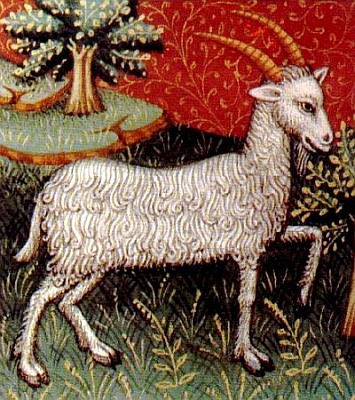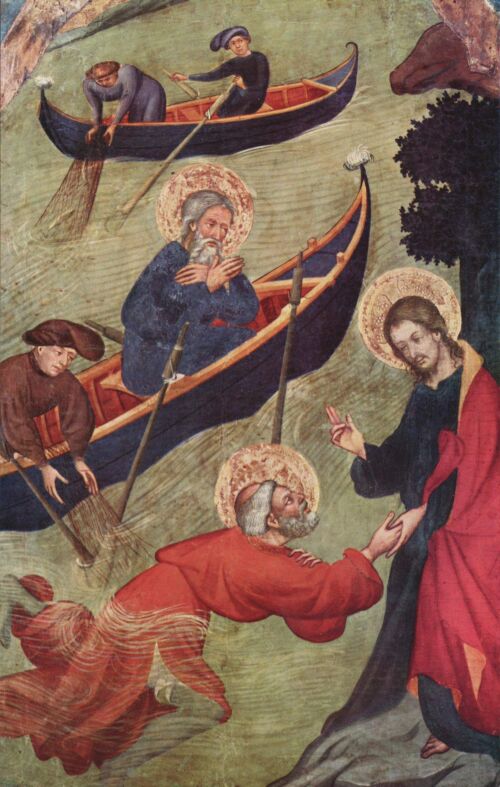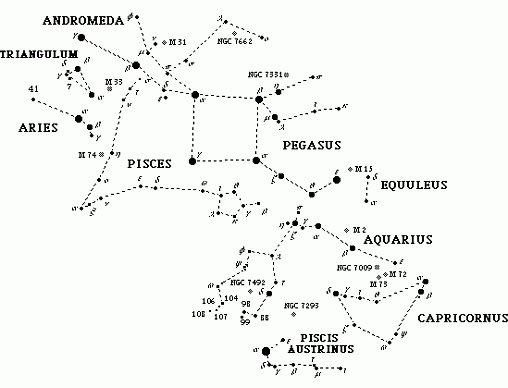|

Capricornus, the goat and the fish in one creature, one
flesh, rises in July. Think of what the goat symbolizes scripturally:
it is one of the animals used as a sacrifice, and the animal used by
the ancient Israelites as a sin offering, as the creature who took on
the sins of the people -- the scapegoat:
Leviticus
16:20-22
After he hath cleansed the sanctuary, and the tabernacle, and the
altar, then let him offer the living goat: And putting both hands upon
his head, let him confess all the iniquities of the children of Israel,
and all their offences and sins: and praying that they may light on his
head, he shall turn him out by a man ready for it, into the desert. And
when the goat hath carried all their iniquities into an uninhabited
land, and shall be let go into the desert
All of the Old Testament sacrifices were but a type of the antitype of the New Testament
Sacrifice.
They foreshadow the Once and For All Time Sacrifice of Christ, Who took
upon Himself the sins of the world, all for the sake of Love.
And the fish? Not only a symbol for Christ Himself -- ΙΧΘΥΣ (Ichthus)
-- but of His people. Recall the Parable
of the Draw Net:
Matthew 13:47-50
Again the kingdom of heaven is like to a net cast into the sea, and
gathering together of all kind of fishes. Which, when it was filled,
they drew out, and sitting by the shore, they chose out the good into
vessels, but the bad they cast forth. So shall it be at the end of the
world. The angels shall go out, and shall separate the wicked from
among the just. And shall cast them into the furnace of fire: there
shall be weeping and gnashing of teeth.
Even more explicit is Christ's referring to the Apostles as
"fishers of men":
Mark 1:16-17
And passing by the sea of Galilee, he saw Simon and Andrew his brother,
casting nets into the sea (for they were fishermen). And Jesus said to
them: Come after me, and I will make you to become fishers of men.
 Indeed, the
fish was taken by the early Christians as a secret symbol, the means to
let other Christians know where to meet and to let other Christians
know who they are. St. Augustine wrote about the mystical symbolism of
the fish in his "City of God," when recounting the History of the Sibyls. St. Clement of Alexandria wrote
about the taking of
the fish as one of our symbols in his Paedagogus:
"And let our seals be either a dove, or a fish, or a ship scudding
before the wind, or a musical lyre, which Polycrates used, or a ship's
anchor, which Seleucus got engraved as a device; and if there be one
fishing, he will remember the apostle, and the children drawn out of
the water." In the same work he includes a beautiful hymn, with part of
which reading, Indeed, the
fish was taken by the early Christians as a secret symbol, the means to
let other Christians know where to meet and to let other Christians
know who they are. St. Augustine wrote about the mystical symbolism of
the fish in his "City of God," when recounting the History of the Sibyls. St. Clement of Alexandria wrote
about the taking of
the fish as one of our symbols in his Paedagogus:
"And let our seals be either a dove, or a fish, or a ship scudding
before the wind, or a musical lyre, which Polycrates used, or a ship's
anchor, which Seleucus got engraved as a device; and if there be one
fishing, he will remember the apostle, and the children drawn out of
the water." In the same work he includes a beautiful hymn, with part of
which reading,
King of saints,
almighty Word
Of the Father highest Lord;
Wisdom's head and chief;
Assuagement of all grief;
Lord of all time and space,
Jesus, Saviour of our race;
Shepherd, who keeps us;
Husbandman, who tills,
Bit to restrain us, Rudder
To guide us as You will;
Of the all-holy flock celestial wing;
Fisher of men, whom You bring to life;
From evil sea of sin,
And from the billowy strife,
Gathering pure fishes in,
Caught with sweet bait of life:
Lead us, Shepherd of the sheep,
Reason-gifted, holy One;
King of youths, whom You keep,
So that they pollution shun:
Steps of Christ, celestial Way;
Word eternal, Age unending;
Life that never can decay;
Fount of mercy, virtue-sending;
Life august of those who raise
Unto God their hymn of praise,
Jesus Christ!
Tertullian uses the metaphor of Christians as fish in his On Baptism:
Happy is our
sacrament of water, in that, by washing away the sins of our early
blindness, we are set free and admitted into eternal life! A treatise
on this matter will not be superfluous; instructing not only such as
are just becoming formed (in the faith), but them who, content with
having simply believed, without full examination of the grounds of the
traditions, carry (in mind), through ignorance, an untried though
probable faith. The consequence is, that a viper of the Cainite heresy,
lately conversant in this quarter, has carried away a great number with
her most venomous doctrine, making it her first aim to destroy baptism.
Which is quite in accordance with nature; for vipers and asps and
basilisks themselves generally do affect arid and waterless places. But
we, little fishes, after the example of our ΙΧΘΥΣ Jesus Christ, are
born in water, nor have we safety in any other way than by permanently
abiding in water; so that most monstrous creature, who had no right to
teach even sound doctrine, knew full well how to kill the little
fishes, by taking them away from the water!
Now consider the sacrificial goat and the fish united in one
flesh -- At One, as in the word "atonement." We,
as the ones chosen to be the Bride of Christ, will be one with our
Groom, destined, if we endure
to the end, to share in
the Divine Nature.
First Decan: Sagitta
The constellation of Sagitta is portrayed as an arrow, symbolizing
repentance. Psalm 37:2-4
Rebuke me not, O
Lord, in thy indignation; nor chastise me in thy wrath. For thy arrows
are fastened in me: and thy hand hath been strong upon me. There is no
health in my flesh, because of thy wrath: there is no peace for my
bones, because of my sins.
The arrow is portrayed as that which pierces our hearts,
humbling us and making us cry out to be saved. It is through repentance
that we start the journey of becoming one with Him.
Psalm 49:1-2, speaking of Christ, uses the metaphor of the arrow to
describe Him:
Give ear, ye
islands, and hearken, ye people from afar. The Lord hath called me from
the womb, from the bowels of my mother he hath been mindful of my
name. And he hath made my mouth like a sharp sword: in the shadow
of his hand he hath protected me, and hath made me as a chosen arrow:
in his quiver he hath hidden me.
God Himself convicts us if we open our hearts and have the
ears to hear.
Second Decan: Aquila
Aquila is seen as an eagle -- interestingly, to the Greeks and Romans,
the eagle that carried the thunderbolts hurled by Zeus in retribution.
Exodus 19:3-4 tells us how "Moses went up to God: and the Lord called
unto him from the mountain, and said: Thus shalt thou say to the house
of Jacob, and tell the children of Israel: You have seen what I have
done to the Egyptians, how I have carried you upon the wings of eagles,
and have taken you to myself." The eagle, enemy of the serpent, symbol
of Christ taking us unto Himself, is a very fitting symbol for a decan
of Capricornus.
Make note of the eighth brightest star in the Northern sky in
this decan: Altair, "The Eagle Star."
Third Decan:
Delphinus
Delphinus means "dolphin," long a symbol for Christ and, even more
often, for the Christian himself. The dolphin has traditionally
been seen rather as the "dog of the sea," a creature known for its
special relationship with humans. They're especially famous for saving
the drowning. Everything written above about the constellation of
Capricornus is emphasized by the existence of the dolphin as the third
decan of this zodiacal sign.

Capricornus can
be seen from July to November.


Capricornus
relative to other stars in the Autumn sky:

|
|

![]()
